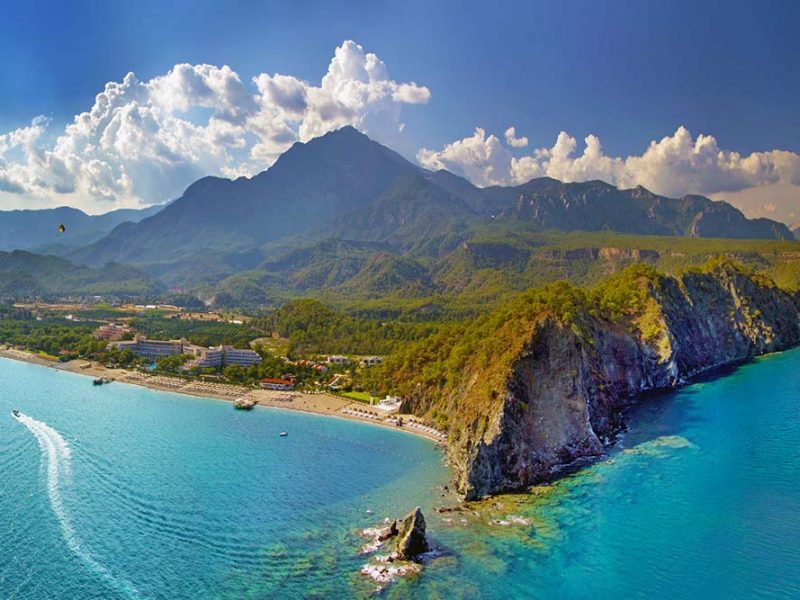Olympos Ancient City, nestled within the borders of Kumluca district in Antalya, Turkey, is a remarkable archaeological and natural wonder. This ancient city takes its name from Mount Tahtalı (also known as Olympos), which rises 2,375 meters high and stands just 16 kilometers to the north. As part of the legendary Lycian Way, Olympos holds great historical, cultural, and natural significance.
Today, it lies within the boundaries of Beydağları Olympos National Park, making it a must-visit destination for history lovers, nature enthusiasts, and adventure seekers alike. With its strategic location and ancient harbor, Olympos was historically the second most important port city in ancient Lycia, after the city of Phaselis.
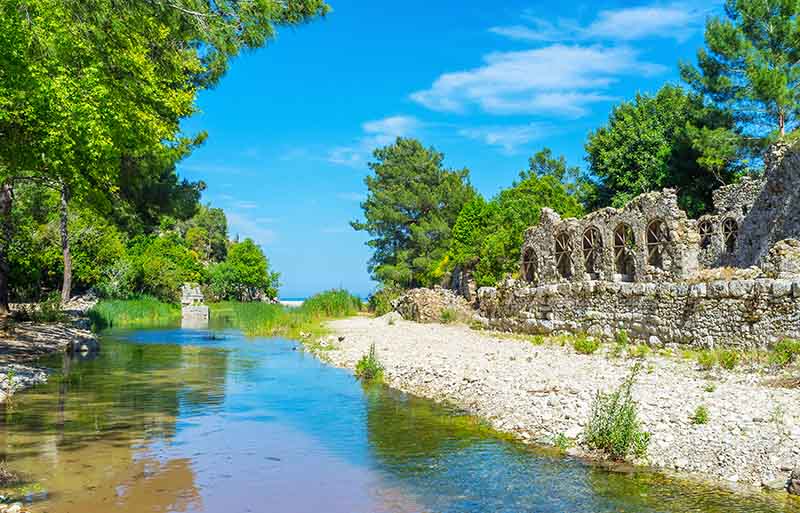
The walk along the narrow Olympos stream with a view on the ancient ruins of Lycian town of Olympos, Turkey.
A Brief History of Olympos Ancient City
Dating back to the 2nd century BC, Olympos was one of the most prominent cities in the Lycian League, an early example of a democratic union. It held the distinction of being one of only six cities granted three votes in the League, as evidenced by coins from 167–168 BC inscribed with the city’s name.
Located along the Lycian Way, which saw a heavy influence from Hellenistic culture, Olympos evolved through three major historical periods: the Hellenistic, Roman, and Byzantine eras. Today, visitors can witness remnants from each of these periods, preserved within the city’s ruins.
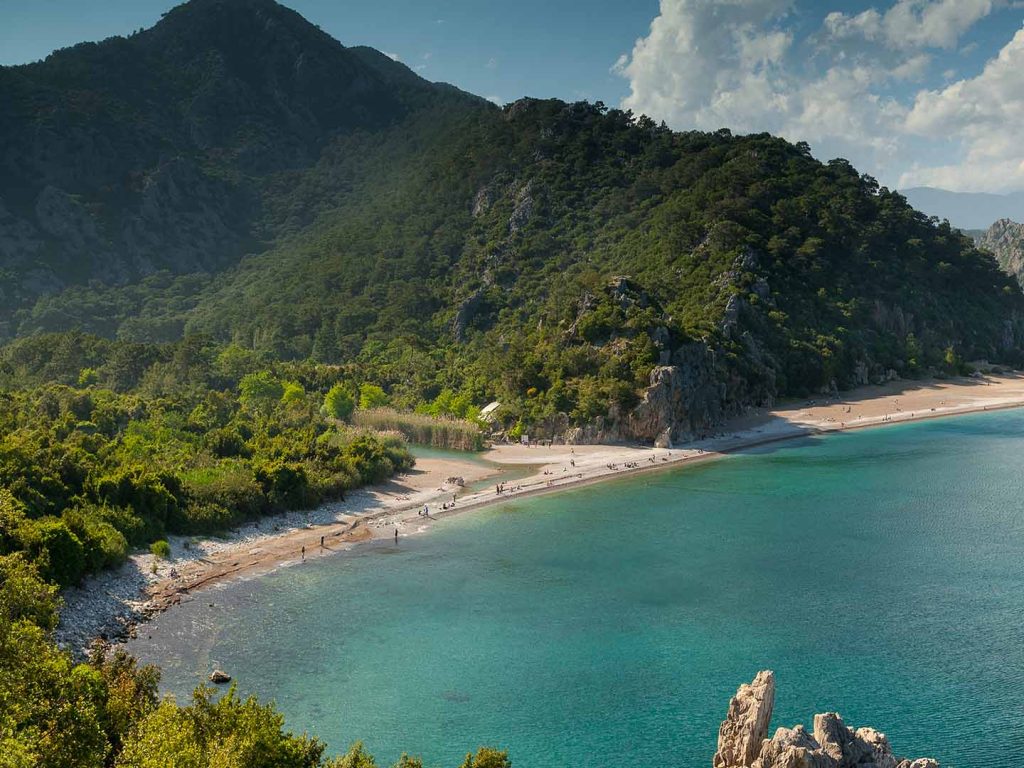
Top view of Olympos beach. Antalya.
The Historical Ruins of Olympos
A defining feature of Olympos is the river that flows through its center, dividing the city into two parts. This river runs east to west and creates two scenic shores that were once connected by stone bridges and ancient piers; remnants of which can still be seen today.
On the southern shore, visitors will find polygonal stone walls from the Hellenistic era, many of which were later repaired during Roman and Byzantine rule. Walking along the riverbank, you can observe these ancient walls rising on both sides, creating a picturesque and atmospheric setting.
Acropolis and Ancient Theater
Near the mouth of the river lies the Acropolis, perched on a steep hill. This area contains late Hellenistic artifacts and the ruins of a small theater, which was originally built during the Hellenistic period and later restored by the Romans. Although much of the structure is in ruins, parts of the entrance remain well preserved.
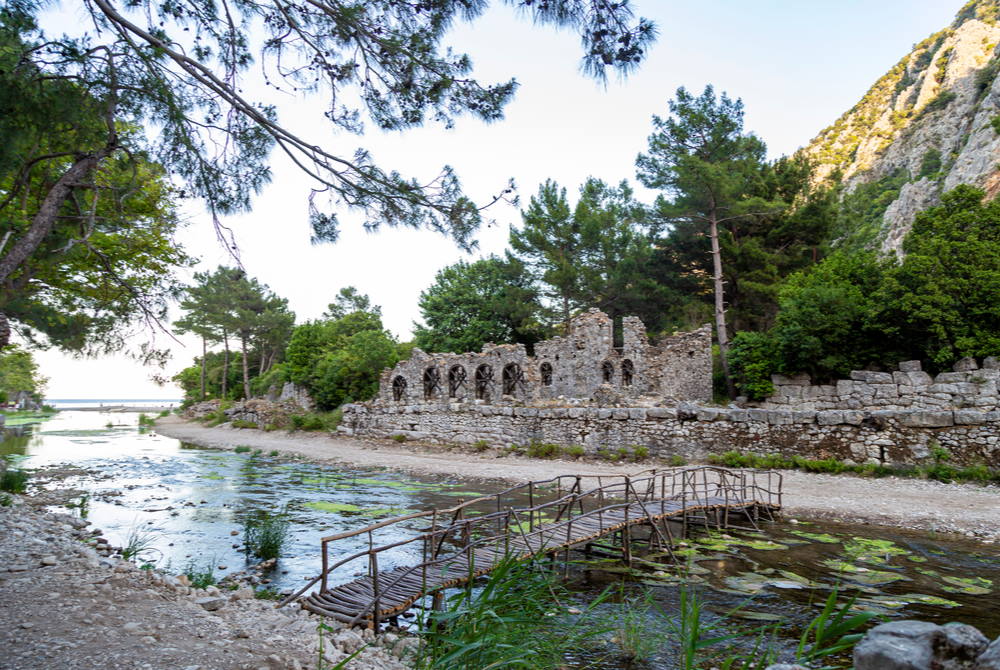
Olympos Bridge in Antalya
The Temple Gate and the Tomb of Captain Eudomus
One of the best-preserved monuments in Olympos is the temple gate of a small Ionian-style temple, located 150 meters west of the river mouth. An inscription reveals it was built during the reign of Roman Emperor Marcus Aurelius in AD 172–173.
Another noteworthy find is the Lycian sarcophagus of Captain Eudomus, carved into the rocks near the river. This monument features a poignant inscription and a carved ship relief, paying tribute to the captain’s seafaring life; an iconic blend of art and emotion.
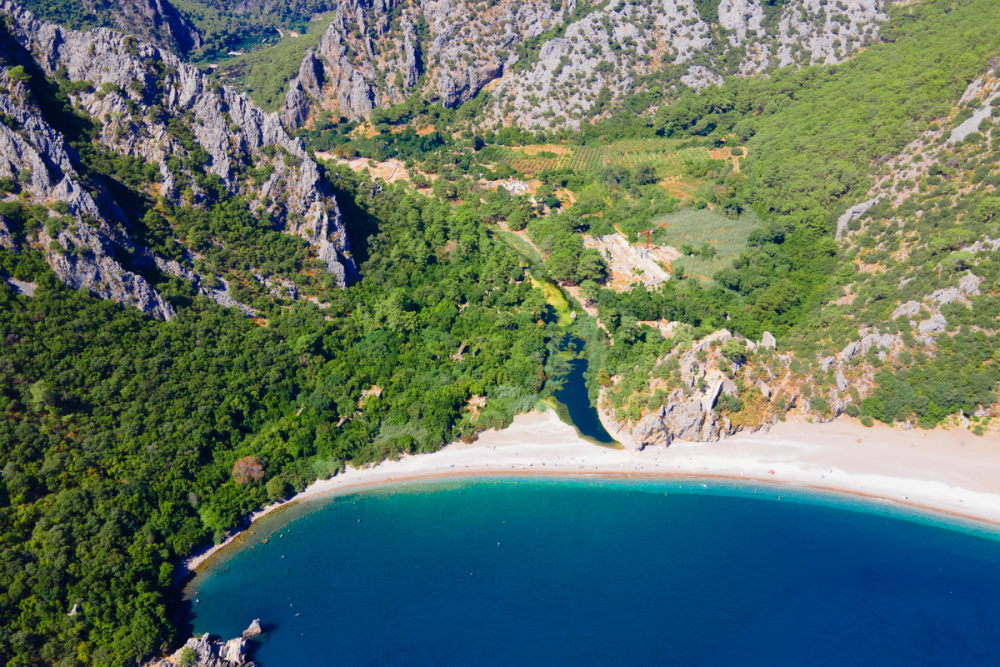
Olympos Çıralı Beach
Olympos and Its Natural Wonders
Olympos is not just a historical site; it is also a biodiverse natural haven. The surrounding area is lush with Mediterranean vegetation, offering a serene setting for hiking, photography, and eco-tourism.
Caretta Caretta Sea Turtles
One of Olympos’s most unique ecological features is its role as a nesting ground for endangered Caretta Caretta sea turtles. Nearby Çıralı Beach, just 300 meters from the ancient site, attracts thousands of visitors annually, especially during nesting season, when these gentle creatures come ashore to lay their eggs.

A happy turtle swimming in Çıralı Beach
The Eternal Flames of the Chimera (Yanartaş)
Just a short distance away is the mysterious flaming rock site of Çataltepe, known as Yanartaş, where natural methane gas escapes through the rocks and ignites spontaneously. These eternal flames have burned for thousands of years and are visible even at night, giving rise to the ancient Chimera myth; a fire-breathing creature from Lycian mythology, vanquished by the hero Bellerophon.

Yanartaş has a permanent fire caused by methane emissions.
Visiting Olympos Today
Only 87 kilometers from Antalya city center and 28 kilometers from Kumluca, Olympos is easily accessible and ideal for a day trip or multi-day excursion. Visitors can explore archaeological ruins, swim at Olympos Beach, hike along the Lycian Way, and enjoy a unique mix of history, mythology, and nature.

